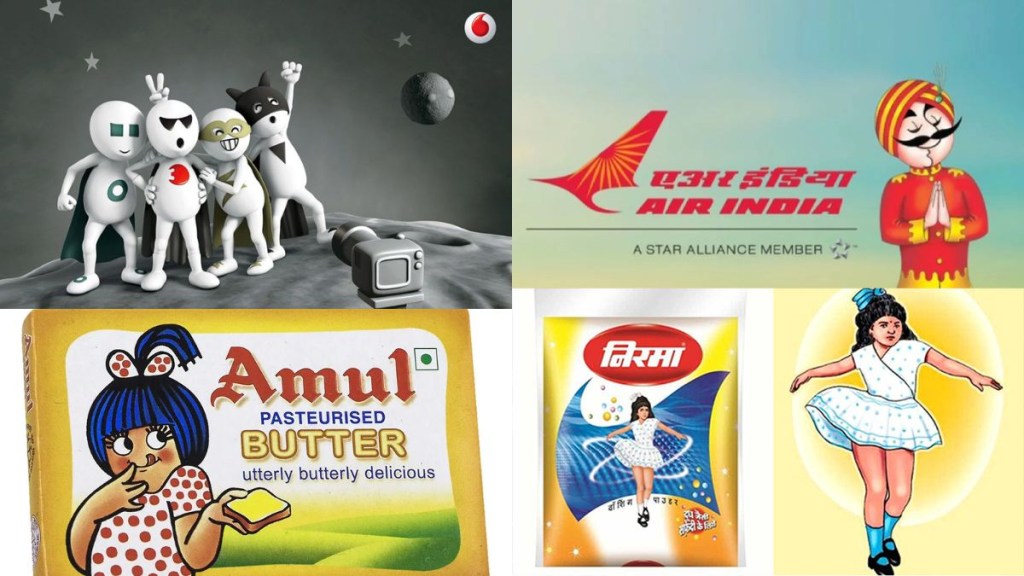Remember Clippy, the mascot of the Office Assistant launched in Windows 97? Clippy’s job was to simply help you write. Most of the time Clippy would stare back at the user from the screen or dance in one corner of it. But every time the user typed an address followed by the word “dear”, the Assistant would spring into action and say: “It looks like you’re writing a letter. Would you like help?” This feature just drove people up the wall. So Clippy, the distraction, was given a quiet farewell.
To cut a long story short, mascots can make companies humane, but one needs to know how and where to use them. And when to retire them. Over the past few days, there have been reports that Air India might retire its signature Maharaja in its endeavour to create a more contemporary image. This begs a question: Are mascots no longer a valuable brand building tool? And when is a good time to retire a popular mascot?
The thing to remember here is, all our popular mascots — the Air India Maharaja, the Amul girl, Asian Paints’ Gattu, the Onida devil — were born well before digital media and advertising took centrestage. And while some mascots like the Amul girl continue to thrive, others seem to have passed their best-before date. Onida did bring back the devil in a 2018 IPL campaign, and Fido Dido made a comeback in a 2019 7UP campaign, but they both failed to survive beyond a few campaigns.
Keeping them relevant
Sandeep Goyal, CMD at Rediffusion, points out that it is important to recognise the purpose of brand mascots in the first place. More than brand building, mascots were created at a time when literacy rates were low and brands were fighting to make an impression. “Today, with the growth of digital media and far better literacy rates, the role of the mascot has diminished and is now more an extension of the brand’s personality. Further, most mascots were created decades ago, often during the Doordarshan era with less clutter in the media space, which is why we remember them well. Today, their utility is limited,” observes Goyal.
The other challenge is in defining the role of the mascot. Goyal argues that a character like the Maharaja would work well in an Air India lounge but doesn’t need to be the lead actor in every ad campaign. Defining the guardrails for the mascot’s use is important if it has to be effective.
Vinay Babani, vice-president, marketing at SRV Media, notes that it is crucial for brand custodians to figure out the best time to retire them. Take for instance, the move to retire Asian Paints’ mascot of over 50 years, Gattu. The brand had to let him go in 2002 as market research indicated that he was being recalled less by consumers compared with Asian Paints’ other brands.
“If your mascot is no longer fitting into your customers’ conversations or if it feels out of place in your brand ethos, it may be time to take a hard look at its relevance,” Babani explains. “Regular conversations with consumers, keeping your ear to the ground for social chatter, and good old market research — that’s the compass for brands to navigate this journey,” says Babani.
But mascots must also avoid the trap of premature retirement, argues Samir Datar, chief strategy officer at Crayons Advertising. “It is a pity that 7UP doesn’t use Fido Dido these days. In current times, an icon like that can truly come to life, with the tools we have like moment marketing. The same is the case with Maharaja. With so many no-frill competing airlines, the Maharaja can become a beacon in the aviation space. Brands must find ways to help their mascots evolve,” urges Datar. He cites the example of the Michelin Man, which has been the face of the French tyre manufacturer for over a century.
Priti Nair, founder of Curry Nation, agrees, noting that mascots in fact permit greater flexibility than marketing tools such as celebrity endorsements. “While there is a challenge in reimagining it, a repurposed mascot allows for greater flexibility and is also commercially viable. You can change its style, its voice or personality — there are immense possibilities. Plus, it is already recognised by consumers. If a mascot has served a brand well for decades, there is no reason it should become irrelevant now. Often, brands get rid of old mascots because they have new marketing teams with a set of different ideas, which cannot accommodate old brand icons. Tragically, they die a sudden death,” remarks Nair.
With the plethora of marketing tools available to brands today, very few brands introduce new mascots. Nair notes that this is because creating and popularising a new mascot involves a significant media investment across platforms and consumer touch points. Citing the example of Ching’s Secret, where Ranveer Singh was introduced as Captain Ranveer Ching some years ago, she says it is still not impossible. Ultimately, a mascot gives the company ownership of a character that could foster brand love and create a lasting legacy.

